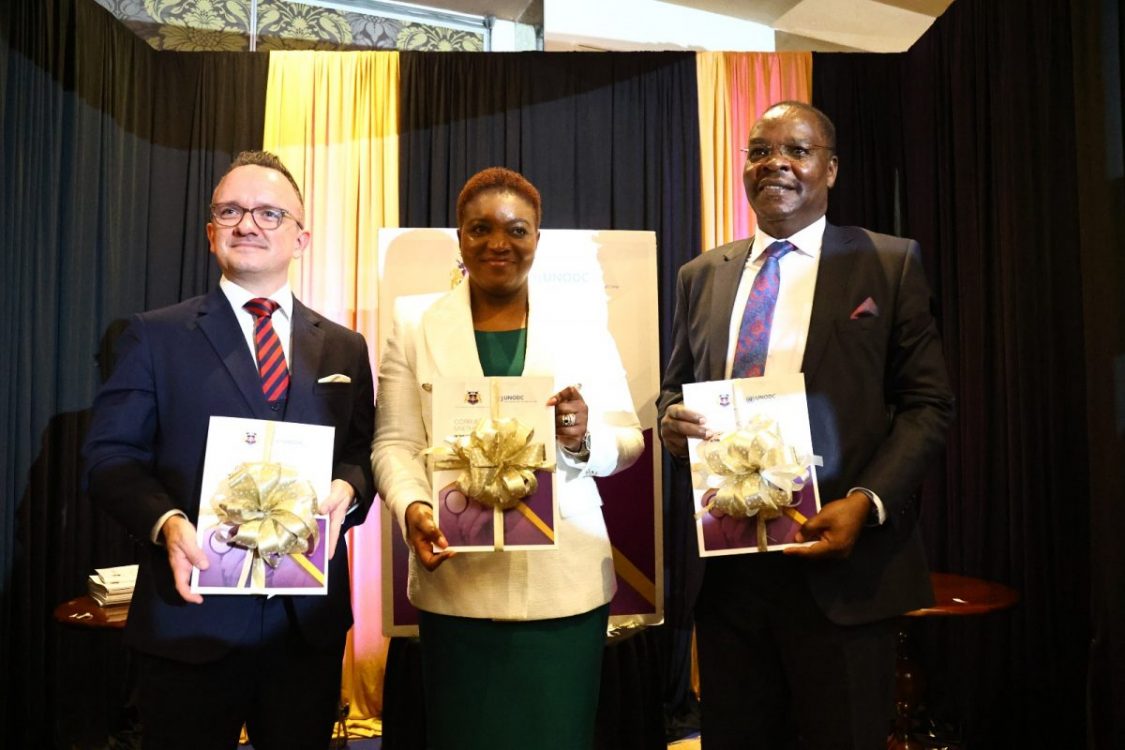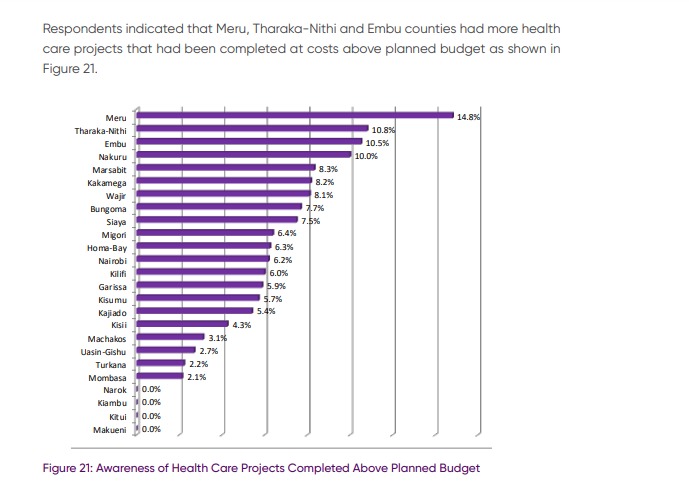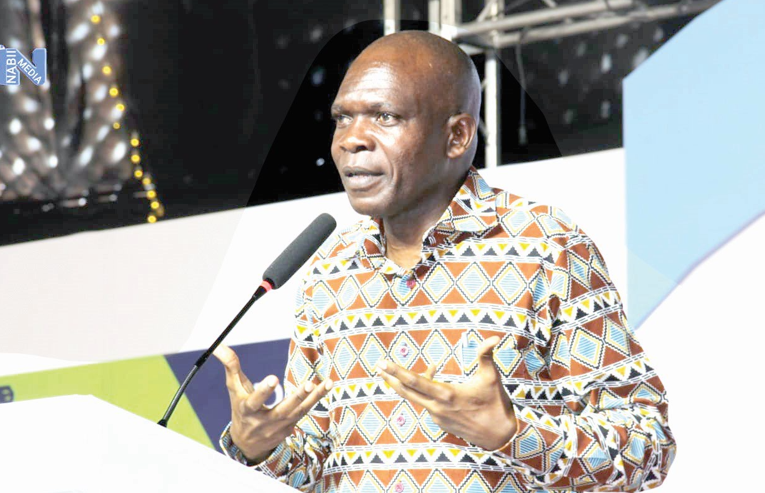Meru, Tharaka Nithi & Embu counties overspent on health projects – EACC report

Meru, Tharaka Nithi and Embu counties have more healthcare projects completed at costs above the planned budget, a new survey shows.
According to the survey report on corruption and unethical conduct in the health sector released by the Ethics and Anti-corruption Commission (EACC) on Wednesday, May 17, 2023, Meru led the pack with a score of 14.8 per cent followed by Tharaka Nithi and Embu counties at 10.8 per cent and 10.5 per cent respectively.
Nakuru was ranked fourth with 10 per cent, followed by Marsabit at 8.3 per cent and Kakamega at 8.2 per cent.
The report shows that Makueni, Kitui, Kiambu and Narok completed most of their projects within the allocated budget.
Health staff interviewed provided various reasons for the over-expenditure including additions in the bill of quantities (24.3%), insufficient budget allocation (10.5%), embezzlement of funds (8.6%), inflation of cost (8.6%) and bribery (6.9%) among other factors.
Delay in completion of projects
Delay in completion of healthcare projects is high in Tharaka-Nithi, Embu and Homa- Bay counties and low in Makueni, Kitui and Turkana counties.
According to the report, awareness of healthcare projects completed beyond the contract period was high in Tharaka-Nithi, Embu and Homa-Bay counties and low in Makueni, Kitui and Turkana.
“Factors that contributed to late completion of projects were delayed disbursements of funds (53.4%), Covid-19 pandemic (14.2%), change of contract terms (10.3%), change of leadership (8.3%) and corruption (6.9%),” the report reads in part.
The report also revealed that procurement opportunities for healthcare projects were more accessible in Makueni, Kakamega and Nakuru counties while Wajir, Garissa and Kajiado recorded the lowest levels.
The survey targeted 2,180 respondents who included hospital employees (1280), members of the public (500), contractors (150), county experts (50) and senior government officials (6).

The survey relied on cross-sectional research design as its framework for data collection and analysis. It was conducted in national and county health facilities drawn from 25 sampled counties across the country.
EACC said data was collected through face-to-face in-depth interviews with the target respondents.
“The data collected was cleaned, coded and analyzed using International Business Machines (IMB) Statistical Product and Services Solution (SPSS) software,” the report adds.
Health Cabinet Secretary Susan Nakhumicha was among senior government officials who attended the launch of the report at Villa Rosa Kempinski.









